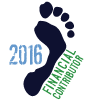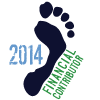Laura, I totally need to move that last sentence of your previous post to the pub. HAHAHA. Sorry...I'm a 15 year old stuck in a 34 year old's body. 
You are using an out of date browser. It may not display this or other websites correctly.
You should upgrade or use an alternative browser.
You should upgrade or use an alternative browser.
I want more speed
- Thread starter Sid
- Start date
Now that you mention it, he does bear a striking resemblance...He also happens to be the developer of the method, if you were not aware ;-)
I'm starting the appreciate the truth of this a bit more with each run.This is the interesting thing about running form- we have no conclusive evidence that anything is really right or wrong.
So, an update. 4 runs since my first posting. A day off in between each.
1. Tried to drive from the hips and waited until heels touched the ground. Felt okay, perhaps slightly jarring when my heels came down. Probably overdid it. Worked out the gluts.
2. A bit more careful. No jarring. Felt okay. Yep, still working out the gluts.
3. Some irritation on the right fifth toe, popped a small blister. Also felt like the plantar nerve to the fifth toe was getting irritated. Changed form slightly to not land on that area. Finished run okay.
4. Fifth toe plantar nerve was still not happy. Changing landing didn't helping either. Picking up the knees a bit fixed it. Also, previously in 1-3, probably was forgetting to relax the feet/toes on the landing/liftoff. Apparently, driving through the hips made me less attentive to landing with the knees bent. Finished run fine. Quads got a workout. Noticed that the balls of my feet were relatively dirt free, whereas before it was clean mostly just under the fourth and fifth toes, so I think I'm spreading out the impact more. Heels as dirty as ever.
At least, my upper body form appears to be better throughout all of the runs. No more slouching. Workout schedule gives me two days off for strength training, before I give it another go next week. Hopefully, I can put it all together then. Live and learn...
1. Tried to drive from the hips and waited until heels touched the ground. Felt okay, perhaps slightly jarring when my heels came down. Probably overdid it. Worked out the gluts.
2. A bit more careful. No jarring. Felt okay. Yep, still working out the gluts.
3. Some irritation on the right fifth toe, popped a small blister. Also felt like the plantar nerve to the fifth toe was getting irritated. Changed form slightly to not land on that area. Finished run okay.
4. Fifth toe plantar nerve was still not happy. Changing landing didn't helping either. Picking up the knees a bit fixed it. Also, previously in 1-3, probably was forgetting to relax the feet/toes on the landing/liftoff. Apparently, driving through the hips made me less attentive to landing with the knees bent. Finished run fine. Quads got a workout. Noticed that the balls of my feet were relatively dirt free, whereas before it was clean mostly just under the fourth and fifth toes, so I think I'm spreading out the impact more. Heels as dirty as ever.
At least, my upper body form appears to be better throughout all of the runs. No more slouching. Workout schedule gives me two days off for strength training, before I give it another go next week. Hopefully, I can put it all together then. Live and learn...
I don't use a "method" other than making sure I am feeling the least possible amount of impact and having the most fun, mostly using insight from reading things famous Ken-Bob has said. Also, since my husband is my "coach" he helps me with programs of alternating my types of runs during the week. During a training time, we usually put in one one long, relaxed run; one tempo run; and one interval speed workout. I can do most of it barefoot, but have learned that when I run my long runs with him, I need to be prepared with footwear, since he takes me in strange places.
We can't run without feelings. I find it fascinating and confusing that some/many don't want to use a method. I think it boils down to just being stubborn. Kind of how guys never want to use a map or directions.....
I'm was definitely feeling it. I'm amazed at how small adjustments can have a great consequences.We can't run without feelings.
I'm going to see how it goes next week, by keeping it light and quick. I think that my knees were feeling it this past week.
I'm was definitely feeling it. I'm amazed at how small adjustments can have a great consequences.
I'm going to see how it goes next week, by keeping it light and quick. I think that my knees were feeling it this past week.
Personally, I don't like to feel pain/tension after the run. For me that is a sign that I didnt excecute optimal technique.
Sid,
Having a defined standard also makes it abit easier to interpret the after and during effects of the run.
Having a defined standard also makes it abit easier to interpret the after and during effects of the run.
We're in agreement on this one.Personally, I don't like to feel pain/tension after the run. For me that is a sign that I didnt excecute optimal technique.
(Probably had some residual soreness on run 1 due to the leg workout the day before.)
If the goal you want to get to is a smooth bowling ball, and who doesn’t, but you are starting with an odd shaped rock. The first tool you pull out is not a rag with some polish. You start with a hammer and chisel.
Yes. I’m speaking from a sample size of one, but I think that when we try and change our form from what we were doing before with shoes vs after we change to barefoot, we completely mess up our form and we run very inefficiently. I think it is absolutely ineffective to start working on something like MAF when our form is inefficient.
I’m using the pace that I was running before changing to barefoot as a baseline. When I get faster than the baseline, than I will start thinking about something else other than just running and form improvements. Over the past few months, I have dropped my pace by more than 2:30 min/mile. I’m now starting to settle in on a refined form and my pace is still dropping every run.
My plan for speed improvement is in the following order:
1) Form (the chisel and hammer)
2) MAF base training after form is efficient.
3) Speed work after MAF improvement levels off (polish)
Jim
Yes. I’m speaking from a sample size of one, but I think that when we try and change our form from what we were doing before with shoes vs after we change to barefoot, we completely mess up our form and we run very inefficiently. I think it is absolutely ineffective to start working on something like MAF when our form is inefficient.
I’m using the pace that I was running before changing to barefoot as a baseline. When I get faster than the baseline, than I will start thinking about something else other than just running and form improvements. Over the past few months, I have dropped my pace by more than 2:30 min/mile. I’m now starting to settle in on a refined form and my pace is still dropping every run.
My plan for speed improvement is in the following order:
1) Form (the chisel and hammer)
2) MAF base training after form is efficient.
3) Speed work after MAF improvement levels off (polish)
Jim
Jim,
i think you could work on maf and form at the same time. they're both going to frustrate the hell out of you so why take longer than necessary?
i think you could work on maf and form at the same time. they're both going to frustrate the hell out of you so why take longer than necessary?
Jim,
i think you could work on maf and form at the same time. they're both going to frustrate the hell out of you so why take longer than necessary?
I think the idea of starting off with low intensity workouts, whilst refining technique and improving cardiovascular endurance, is the way to go. Otherwise I think there is the risk of overuse injury because of poor technique.
If, as Jim says, "when we try and change our form from what we were doing before with shoes vs after we change to barefoot, we completely mess up our form and we run very inefficiently." The last thing we should be doing is stressing the system. Taking things easy and getting the new form dialed in seems to make sense to me. Maffetone recommends taking things easy - at least until certain baselines have been reached.
I don't think efficiency improves by stressing a novice's system.
From another perspective:
“Think Easy, Light, Smooth, and Fast. You start with easy, because if that’s all you get, that’s not so bad. Then work on light. Make it effortless… When you’ve practiced that so long that you forget you’re practicing, you work on making it smooooooth. You won’t have to worry about the last one – you get those three, and you’ll be fast.”
For an example of how speed near LT forces improvements in form and efficiency, I've been doing 3x1k cruise repeats for a month or two, once a week. 1st repeat fast and just below LT (about 5k race pace), 2nd and 3rd slight increases in effort to just above LT, but concentrating on running faster not running harder. Recovery as much as needed, as the object is merely to run near LT at the fastest pace possible.
The progression:
4:37-4:17-4:05
4:24-4:10-3:55
4:12-4:00-3:45
4:05-3:52-3:42
3:52-3:42-3:38
4:11-3:52-3:42
3:49-3:38-3:32
3:52-3:35-3:22
The idea is that at or near LT, the only way you can go faster is to improve your form. The 3rd intervals often involved spontaneous changes in form, sometimes "remembering" my old college-age form, sometimes adding new elements.
It's also a good way to conquer the fear of running faster. It's easy to confuse speed with effort and think that just because you're going faster than usual, it must be taking more effort. So you start imagining pain and lactate and slow down. Focusing on ignoring imaginary pain got me that 3:22 last time.
The progression:
4:37-4:17-4:05
4:24-4:10-3:55
4:12-4:00-3:45
4:05-3:52-3:42
3:52-3:42-3:38
4:11-3:52-3:42
3:49-3:38-3:32
3:52-3:35-3:22
The idea is that at or near LT, the only way you can go faster is to improve your form. The 3rd intervals often involved spontaneous changes in form, sometimes "remembering" my old college-age form, sometimes adding new elements.
It's also a good way to conquer the fear of running faster. It's easy to confuse speed with effort and think that just because you're going faster than usual, it must be taking more effort. So you start imagining pain and lactate and slow down. Focusing on ignoring imaginary pain got me that 3:22 last time.
I'm definitely with Kozz on this one. Practicing good form is rather effortless at just below LT. I can sustain it for about 5 to 6 miles now, and both the pace and the distance at LT keep improving. I've dialed in one LT run per week, one 440 intervals and hills run, and one long and slow run. It seems like a great combo for overall running development as you get to practice four different paces and therefore four different range-of-motions, cadences, and effort levels. I think the variety is good for both your cardio-vascular system and your legs-feet's muscles/tendons/joints. Plus it's really fun to run (relatively) fast once in a while; it's a nice change-up from the pleasures of a long, meditative run.
It may just be "horses for courses".
I don't do many events, and never do workouts with a specific goal in mind, but, having applied the "easy, light, smooth.....fast" philosophy for about 3 years, I've certainly found my speed has increased. My most recent event was back in June and a, non-standard, 3.57 barefoot miles but I saw from my Polar GPS trace that I went through 3.1 miles in 19:40 which, age-graded, gives me a 16:14.
I guess there's still more than one way to skin a cat!
I don't do many events, and never do workouts with a specific goal in mind, but, having applied the "easy, light, smooth.....fast" philosophy for about 3 years, I've certainly found my speed has increased. My most recent event was back in June and a, non-standard, 3.57 barefoot miles but I saw from my Polar GPS trace that I went through 3.1 miles in 19:40 which, age-graded, gives me a 16:14.
I guess there's still more than one way to skin a cat!
I think it's essentially the same thing, it's just that for me, and perhaps other runners like me, the sequence is: Easy, Fast, Smooth, and Light. Once running becomes easy, I want to go faster. And when I go faster, I feel smoother. Now I'm starting to feel light. I think when I can sustain an even faster pace I'll feel light most of the time.I guess there's still more than one way to skin a cat!
But I trust everyone's instinct to run the way they find most enjoyable. If it's enjoyable, you're probably doing what's right for you, and in any case running enjoyably is definitely the best way to run consistently, and consistency, no matter what sort of running one does, is the biggest factor in improvement.
If you're lost and don't want to use a map or ask directions, that is being stubborn. If you're lost but understand the geography and have your bearings, you can trust yourself to find the way. If you're running and getting injured or not achieving your goals, you should consider changing your method or getting a coach. If you don't, that is being stubborn. If you're running and doing just fine, no need for a method or coach.We can't run without feelings. I find it fascinating and confusing that some/many don't want to use a method. I think it boils down to just being stubborn. Kind of how guys never want to use a map or directions.....
I dunno, at least in terms of posture, I feel confident in saying at least some runners are doing it wrongly. It's almost painful to watch.This is the interesting thing about running form- we have no conclusive evidence that anything is really right or wrong... it's all a giant crap shoot.
The only time I tried to run fast so far is when I was in a 5k race and then I was sore for 4 weeks. I always try and run easy, but what I found is the better my form gets the faster I go without trying. I still have a very long ways to go, but today I ran 3 easy miles in the pouring rain at a 7:47 min/mile pace and it felt so awesome.
Jim
Jim
Well, I guess I can see that. Trying to be succinct can have its pitfalls. Having been married to him for thirty years, I think I can handle the humor.Laura, I totally need to move that last sentence of your previous post to the pub. HAHAHA. Sorry...I'm a 15 year old stuck in a 34 year old's body.
Definitely agree. I can't say that I'm the paragon of perfect form, but I see a lot of people who seem off. Of course, I don't know if they have some sort of imbalance or disability, but I'd say 70% of the neighborhood joggers.I dunno, at least in terms of posture, I feel confident in saying at least some runners are doing it wrongly. It's almost painful to watch.

































